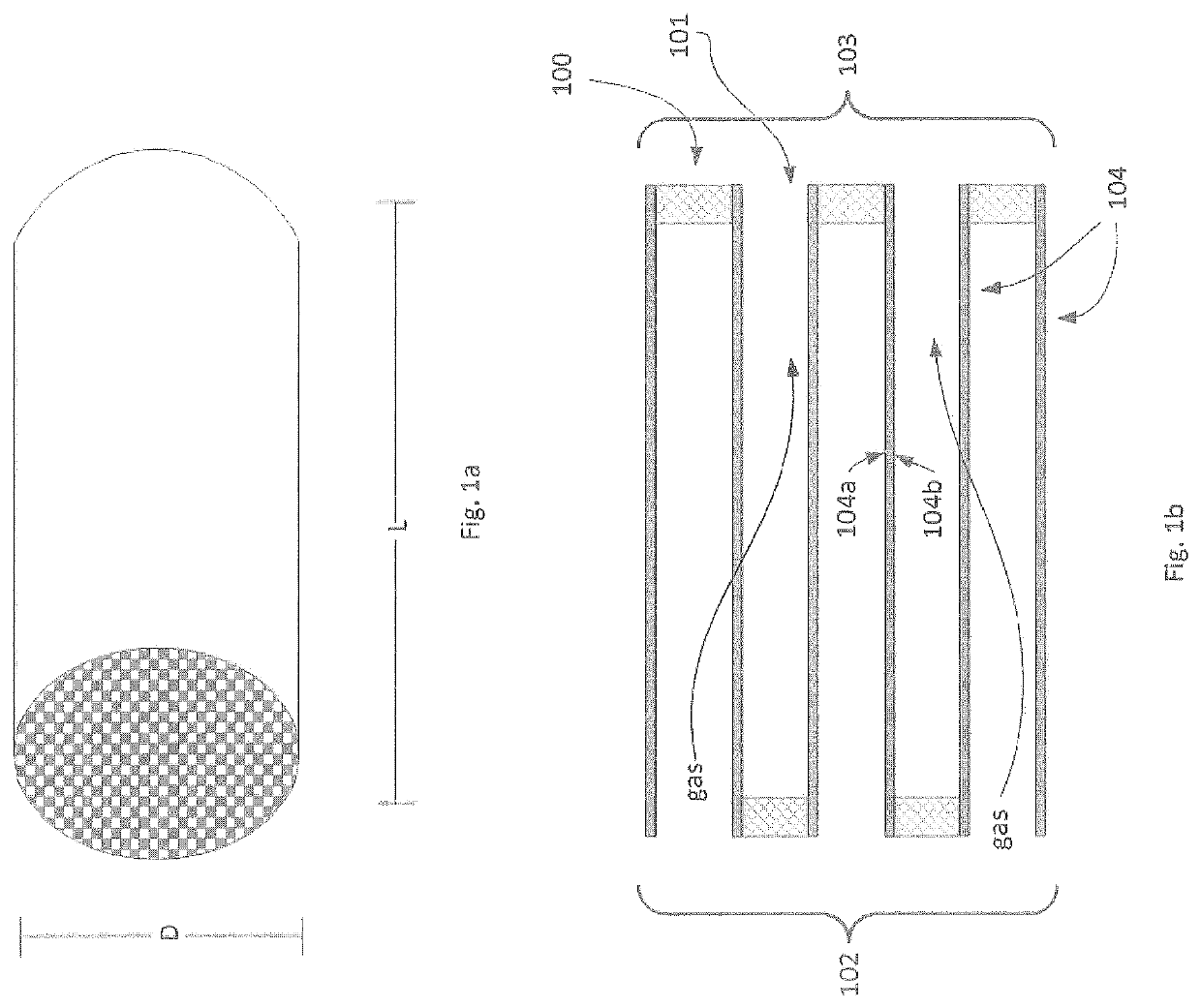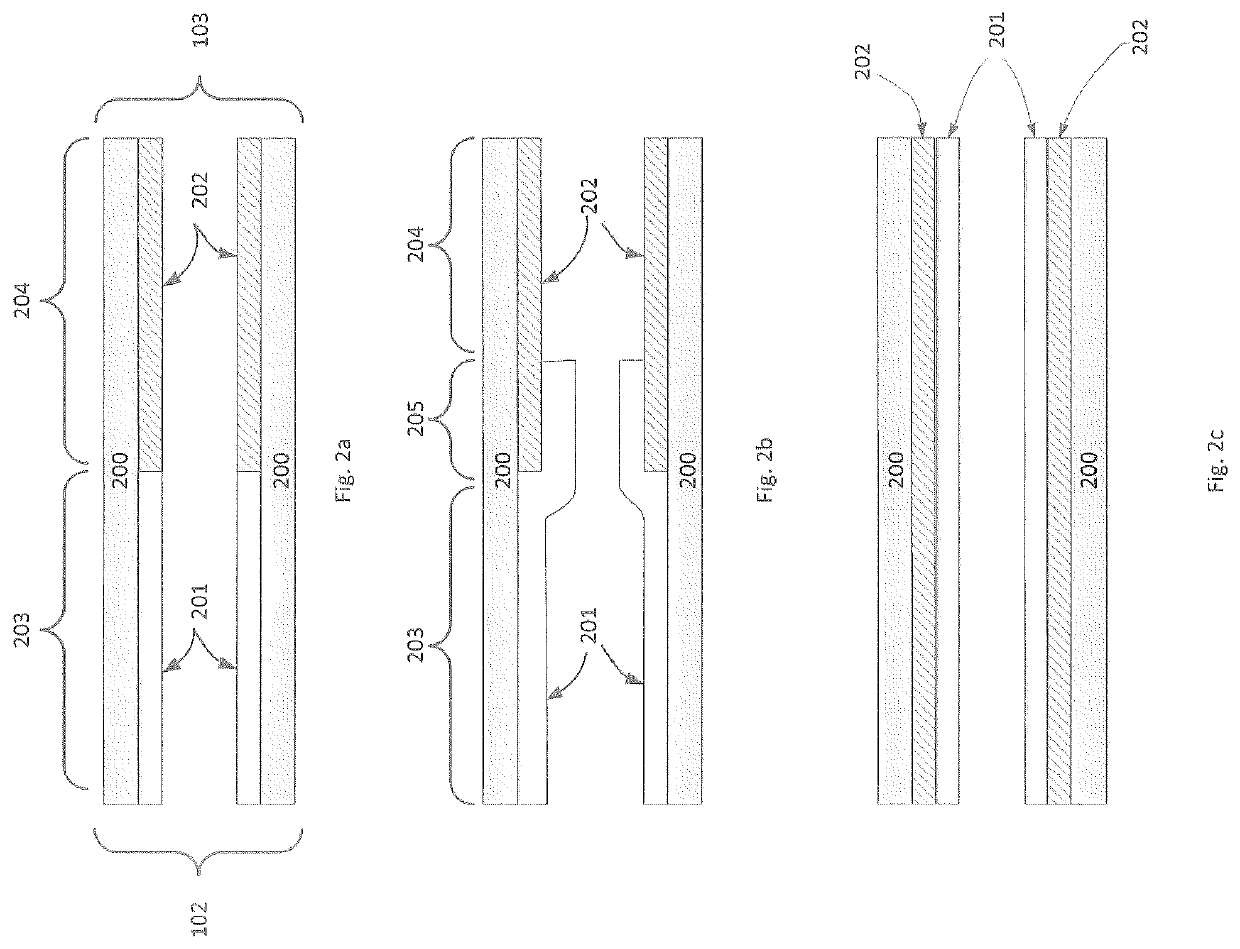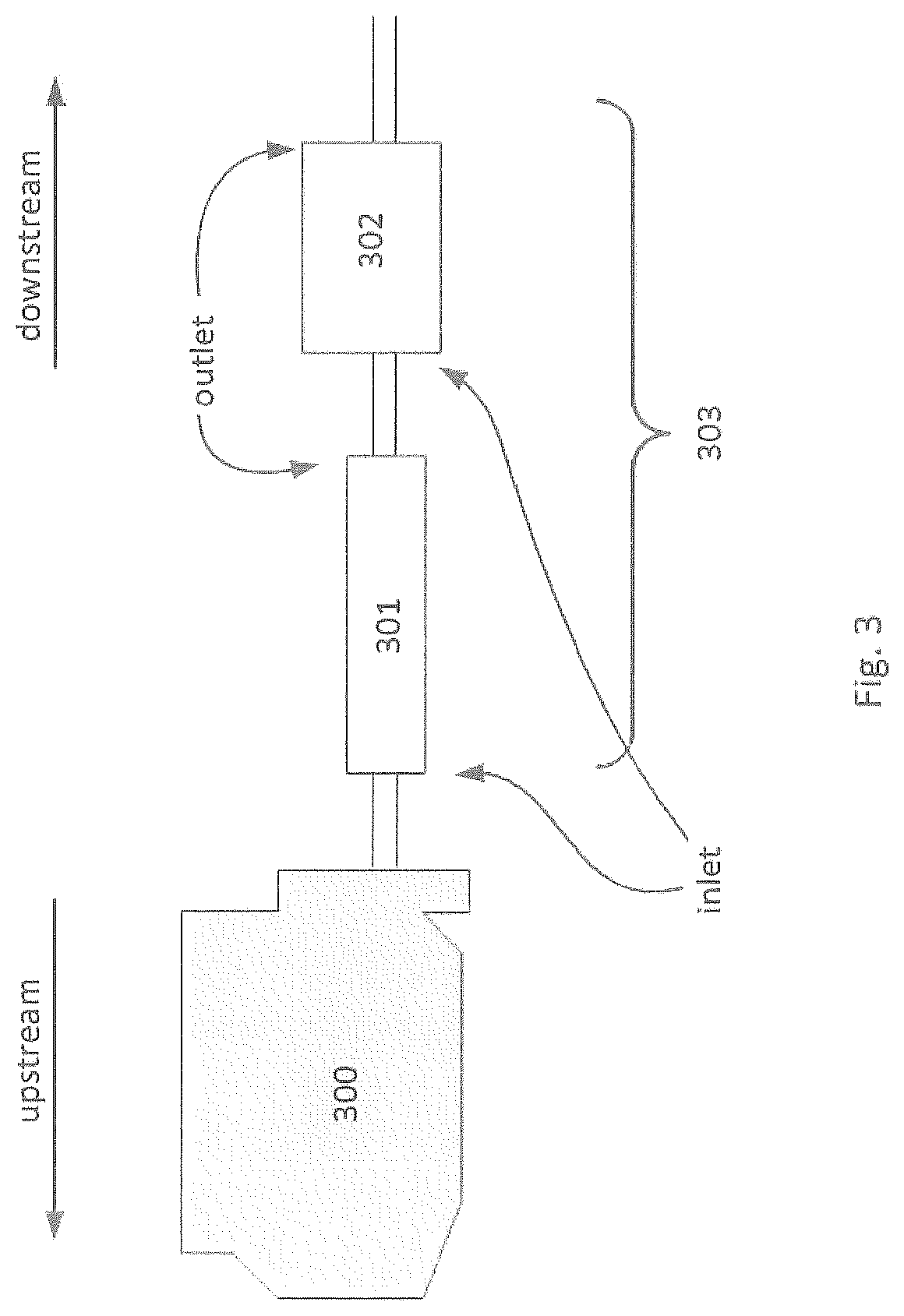Hydrogen-assisted integrated emission control system
a technology of emission control system and hydrogen-assisted technology, which is applied in the direction of exhaust treatment electric control, physical/chemical process catalysts, separation processes, etc., can solve the problems of complex system to handle every aspect of the driving cycle, less effective catalysts used to treat the exhaust of internal combustion engines, and low temperature operation
- Summary
- Abstract
- Description
- Claims
- Application Information
AI Technical Summary
Benefits of technology
Problems solved by technology
Method used
Image
Examples
example 1
DOC Article
[0182]A bottom coat catalyst slurry containing milled alumina powder impregnated with Pd (0.5 wt. %), Ba (0.8 wt. %) and Pt (0.3 wt. %) is prepared and adjusted to a pH of 4.5 to 5.0 with nitric acid. The bottom coat slurry had a solid content of 38 wt. %. A top coat slurry containing alumina / 5 wt. % Mn and Pt-amine (3.3 wt. %) is prepared, milled and adjusted to a pH of 4.5 to 5.0 with nitric acid. The top coat slurry had a solid concentration of 37 wt. %. Zeolite beta (0.35 g / in3) was added to the top coat slurry.
[0183]The bottom coat slurry was applied to the entire core length of a 1″×3″, 400 cpsi (cells per square inch) honeycomb substrate via a washcoat technique. The coated substrate was air dried at 120° C. and calcined at 500° C. for 1 hour, providing a coating loading of 1.6 g / in3. The top coat slurry was applied over the entire bottom coat and was dried and calcined as the bottom coat, to provide a total coating loading of 2.5 g / in3 and a Pt / Pd weight ratio of ...
example 2
SCRoF Article
[0184]A catalyst slurry containing milled CuCHA (3.3 wt. % Cu) and 5 wt. % zirconium acetate binder was prepared and applied via a washcoat technique to a 300 / 12, 1″ dia×5.5″ length honeycomb substrate filter with alternate channel openings having a volume of 70.8 cm3. The coated core was dried at 130° C. and calcined at 550° C. for 1 hour to provide a coating loading of 1.75 g / in3.
example 3
Pollution Abatement
[0185]The coated DOC article of Example 1 is hydrothermally aged in a tube furnace at 800° C. for 16 hours with a feed gas composition of 10% H2O, 10% O2, balance N2. The SCRoF article is fresh. Samples are evaluated in a lab reactor equipped to conduct a simulated NEDC (New European Driving Cycle) with a separate feed line for H2 / N2 serving as the source for H2 pulse, just in front of the DOC. NH3 was injected prior to SCRoF at NH3 / NOx ratio=1 on a second-by-second basis. Engine out temperature traces between vehicle and simulator are provided in FIG. 5, and engine out CO emissions between the vehicle trace and simulator are provided in FIG. 6. Hydrogen injection impact was evaluated for the DOC only and for the DOC+SCRoF system, with a sampling line taken between the DOC and SCRoF, as well as a second sampling line after the combined system. The SCRoF article was downstream of the DOC article.
[0186]Hydrogen was pulsed into the exhaust stream during the first 200...
PUM
| Property | Measurement | Unit |
|---|---|---|
| porosity | aaaaa | aaaaa |
| pore size | aaaaa | aaaaa |
| exhaust temperatures | aaaaa | aaaaa |
Abstract
Description
Claims
Application Information
 Login to View More
Login to View More - R&D
- Intellectual Property
- Life Sciences
- Materials
- Tech Scout
- Unparalleled Data Quality
- Higher Quality Content
- 60% Fewer Hallucinations
Browse by: Latest US Patents, China's latest patents, Technical Efficacy Thesaurus, Application Domain, Technology Topic, Popular Technical Reports.
© 2025 PatSnap. All rights reserved.Legal|Privacy policy|Modern Slavery Act Transparency Statement|Sitemap|About US| Contact US: help@patsnap.com



